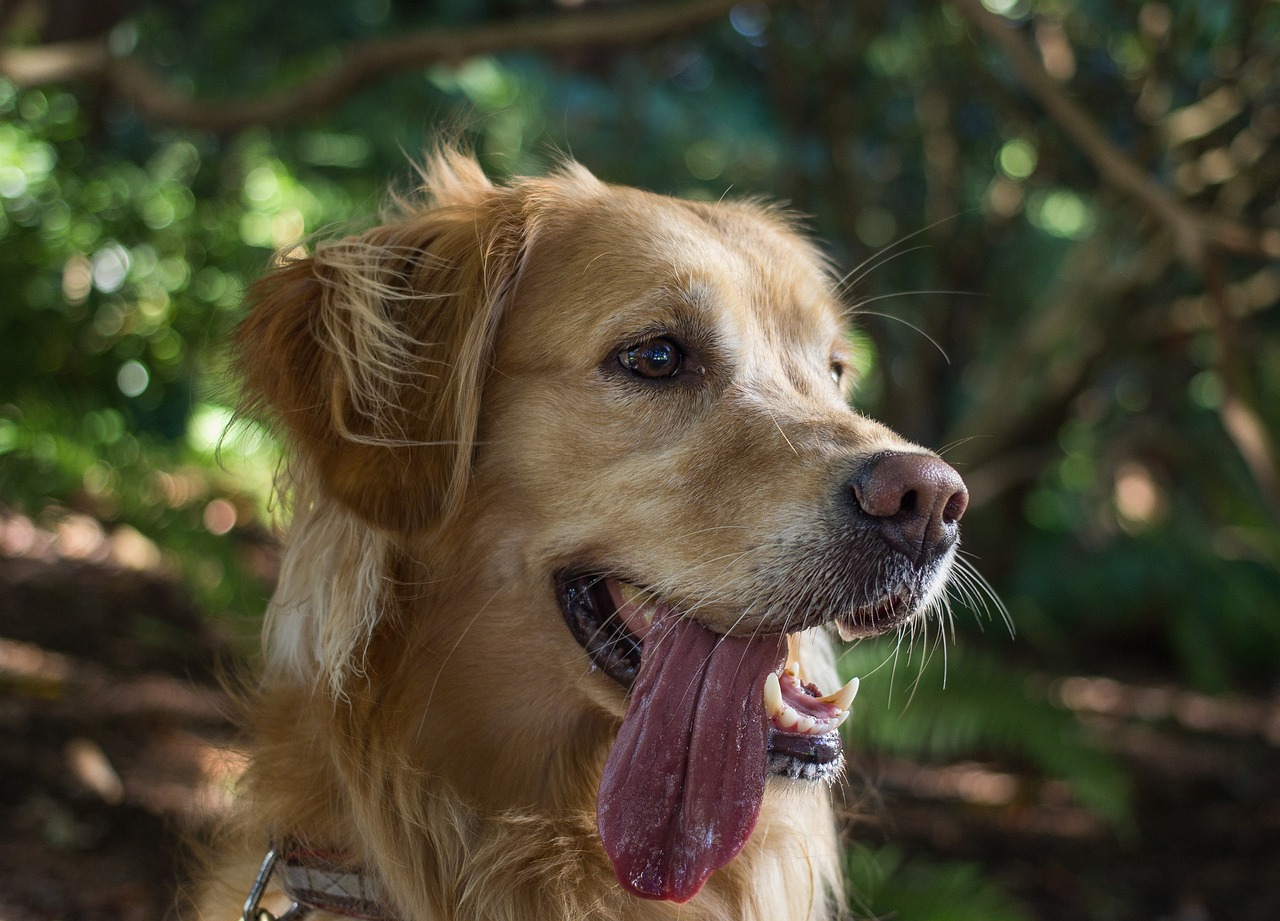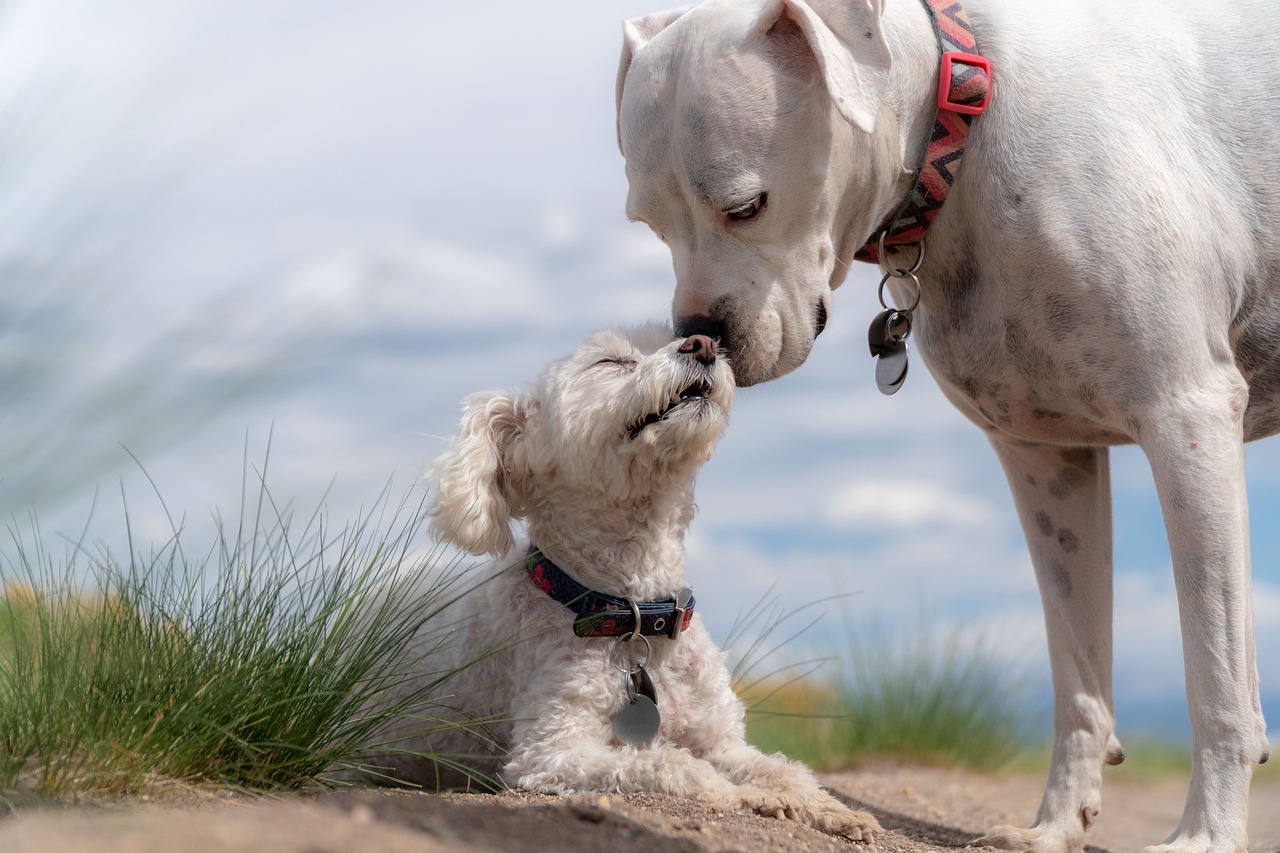Recognizing Signs of Heat Distress in Dogs
If you’re a dog owner, you know how important it is to keep your pet comfortable and safe during the hot summer months. For some great tips on how to do just that, check out this article from Animal Wellness Magazine. It’s packed with practical advice to help your dog stay cool and healthy as the temperatures climb.
Dogs don’t cool down as easily as humans because they don’t sweat through their skin. They pant and release heat through their paw pads. When it’s very hot, dogs can quickly overheat, which can be dangerous. Knowing the early signs of heat distress is important for keeping them safe.
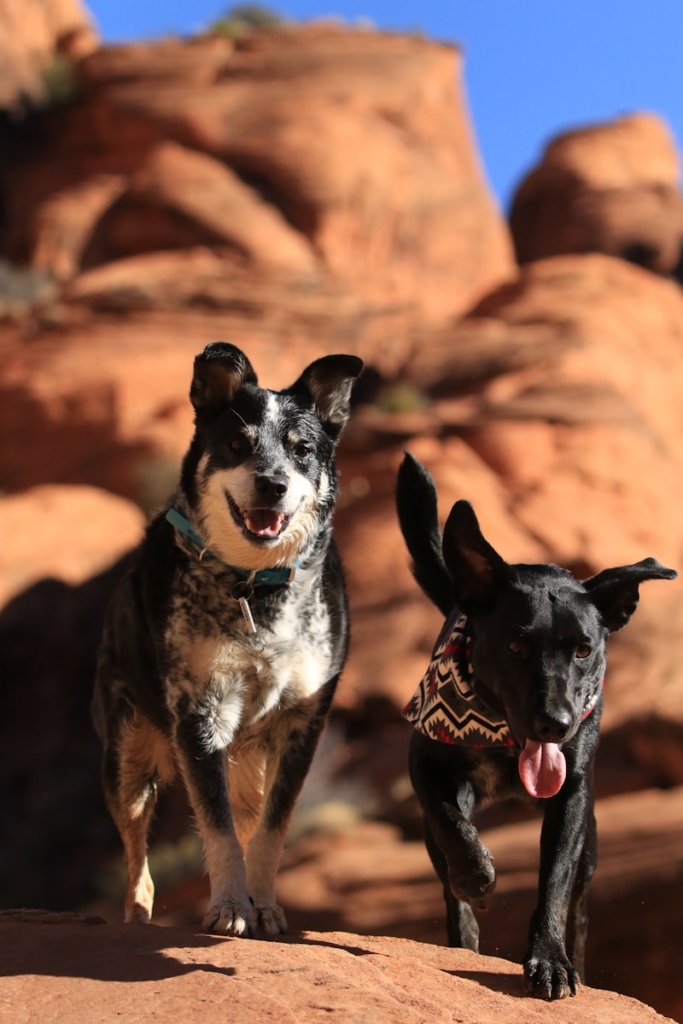
Signs of Heat Distress
The article outlines various signs that your dog might be struggling with the heat. These signs can start subtly but may quickly become serious if not addressed. Watch for symptoms like:
- Excessive panting: While panting is normal, excessive panting may indicate overheating.
- Drooling: More drooling than usual can be a sign your dog is trying to cool down.
- Weakness or lethargy: If your dog is unusually tired, it might be due to heat exhaustion.
- Red or pale gums: This could indicate poor circulation, a side effect of overheating.
- Vomiting or diarrhea: These are serious symptoms that often accompany heat-related illnesses.
If you notice any of these signs, act quickly. Move your dog to a cooler area, provide fresh water, and use cool, wet towels to help lower their body temperature. If symptoms persist, contact your vet immediately.
“Dogs are especially vulnerable to heat because they can’t regulate their body temperature as efficiently as humans. Being aware of the early signs of heat distress is crucial for their safety.”
By keeping informed and proactive, you can help ensure your dog remains safe and comfortable, even on the hottest days. This proactive care not only helps maintain your pet’s health but also strengthens the bond you share, as they depend on you for their well-being.
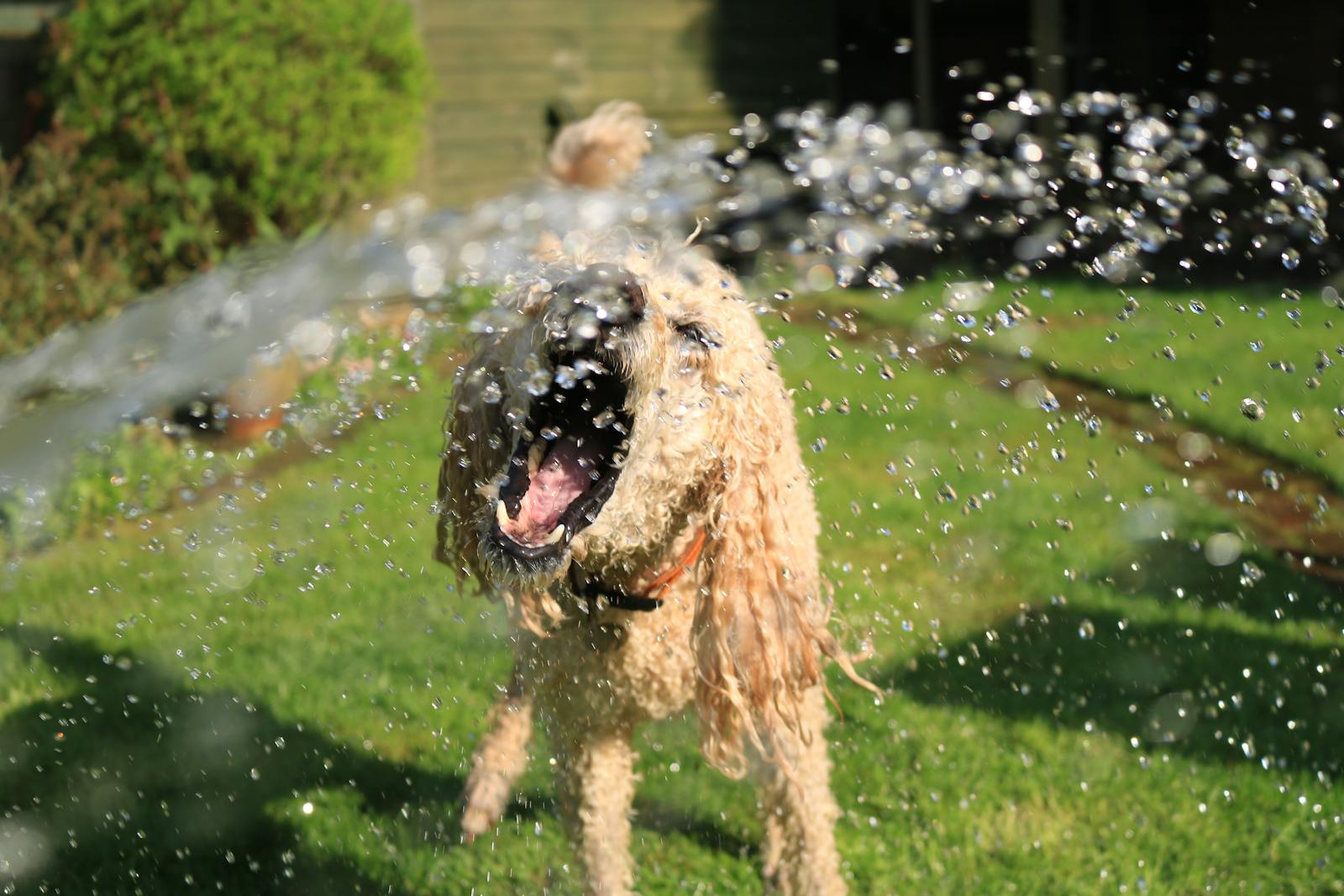
Providing Adequate Hydration
How to Keep Your Dog Hydrated
Hydration is vital for dogs, especially in the heat. Proper hydration helps regulate their body temperature and prevent dehydration, which can be dangerous. Here’s how you can ensure your dog gets enough water during hot weather:
- Always have fresh water available: Ensure your dog has access to fresh, cool water at all times, both indoors and outdoors.
- Bring water on walks: Carry a water bottle and a portable bowl on walks, offering water frequently.
- Add ice cubes: Ice cubes in their water bowl can keep water cool and make drinking more appealing. Some dogs enjoy chewing on ice cubes, too.
- Offer hydrating snacks: Provide snacks like cucumber slices or watermelon (without seeds), which have high water content and are safe for dogs.
Recognizing dehydration is also key:
| Signs of Dehydration | What It Means |
| Dry gums | Gums feel sticky instead of moist. |
| Loss of skin elasticity | Skin doesn’t spring back quickly when pinched. |
| Thick saliva | Saliva appears thicker and more stringy than normal. |
| Sunken eyes | Eyes may appear more recessed into the head. |
If you think your dog is dehydrated, provide water immediately and consider an electrolyte solution designed for pets. Consult a vet if conditions do not improve, as severe dehydration can lead to serious complications.
Maintaining your dog’s hydration is straightforward but critical for their health and happiness during extreme heat. Keeping them hydrated reduces the risk of heat-related health issues and ensures they enjoy their time outdoors safely.
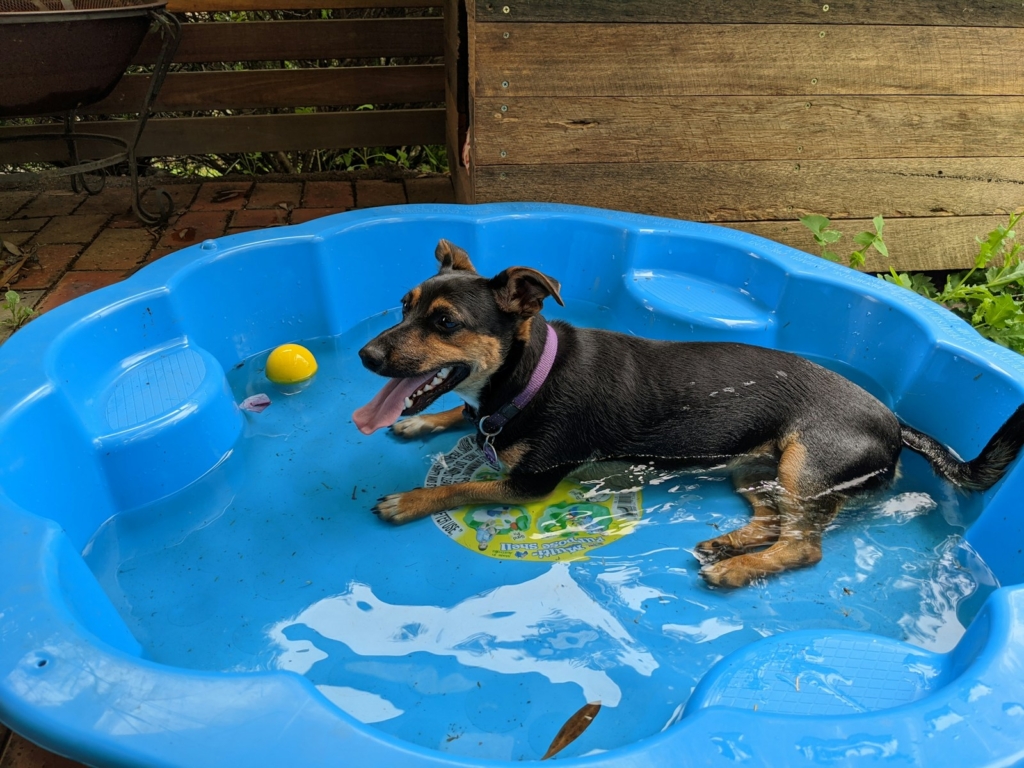
Cooling Techniques and Accessories
When temperatures rise, keeping your dog cool is a priority. Here are some effective ways to help your dog stay comfortable:
At home, try filling a kiddie pool with cool water for your dog to splash around in. Many dogs enjoy this simple and fun way to cool off. If you don’t have access to a pool, a light spray from a garden hose can also provide relief.
Indoors, keep the air moving with fans or air conditioning. Positioning a fan near your dog’s resting area can help significantly, as moving air speeds up the evaporation of moisture from their fur, aiding in cooling. If available, air conditioning can provide immediate relief from the heat.
Consider investing in a cooling mat or vest. These products are designed to absorb your dog’s body heat and provide a cooler surface to lie on or wear. They’re particularly useful during the peak heat hours or after a walk.
For shaded outdoor rest, ensure there are cool, shaded areas where your dog can relax away from direct sunlight. Setting up a canopy or umbrella can create a comfortable retreat.
Portable fans and misters are also excellent for outdoor activities, helping to reduce the surrounding air temperature and making your dog more comfortable.
Integrating these cooling techniques and products into your daily routine can help your dog beat the heat and stay healthy. Always be proactive during the hottest parts of the day and ensure your dog has a comfortable place to cool down.
For more detailed advice and additional tips on keeping your dog cool, visit the full article at Animal Wellness Magazine.
